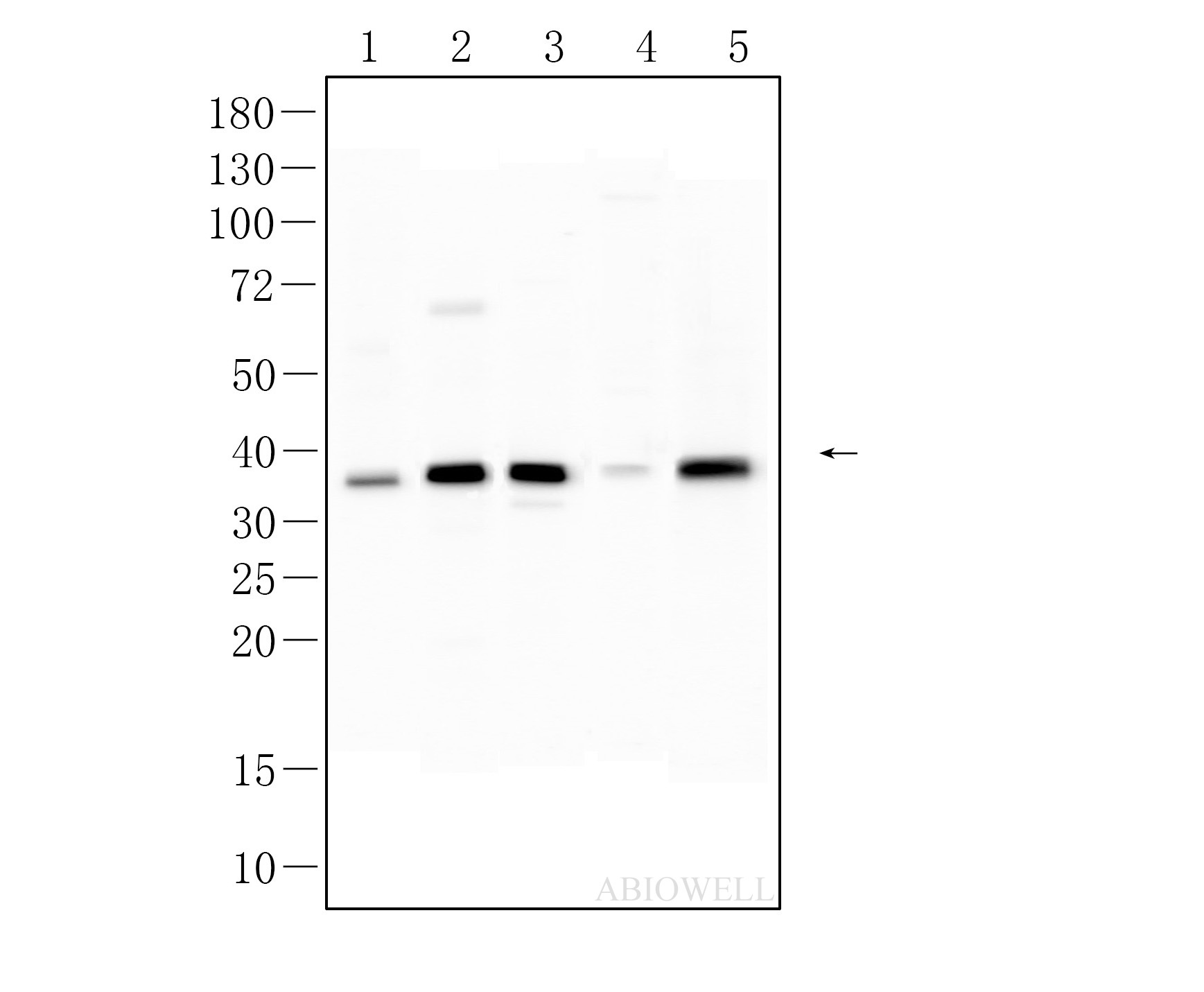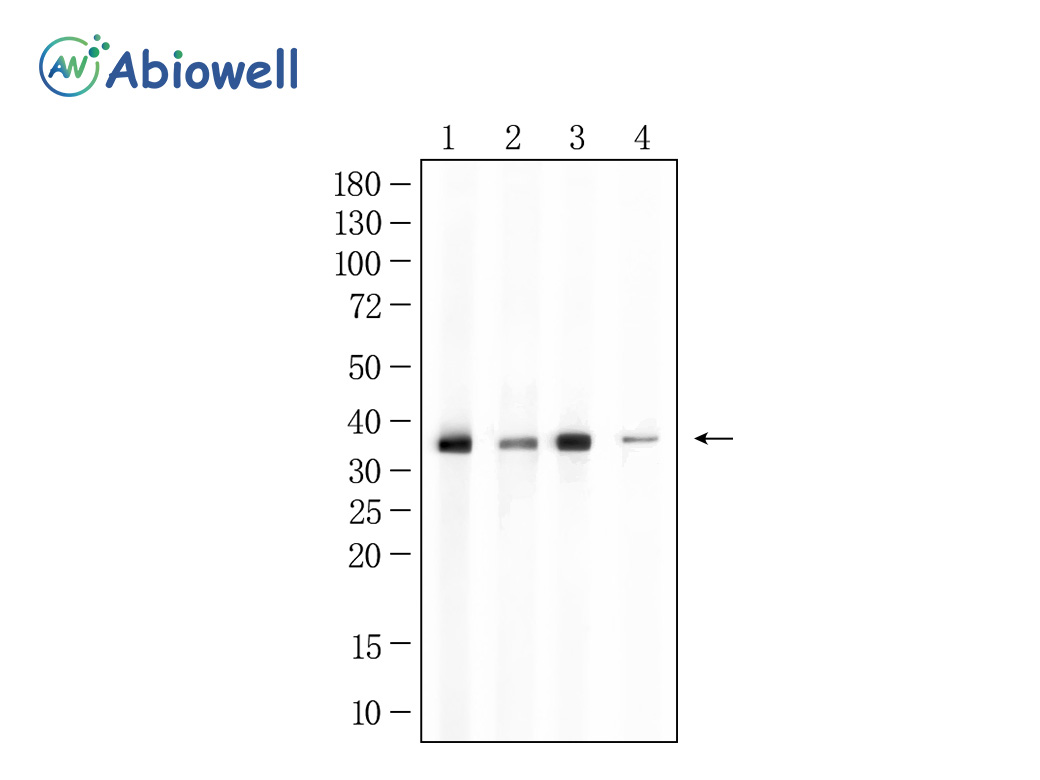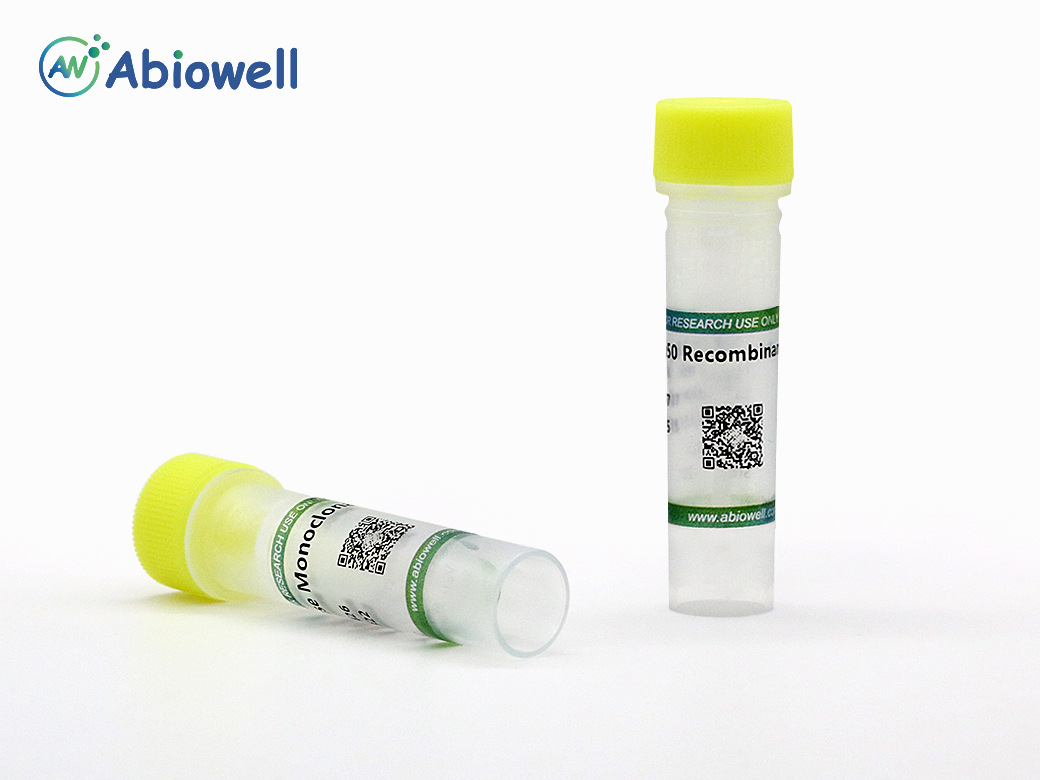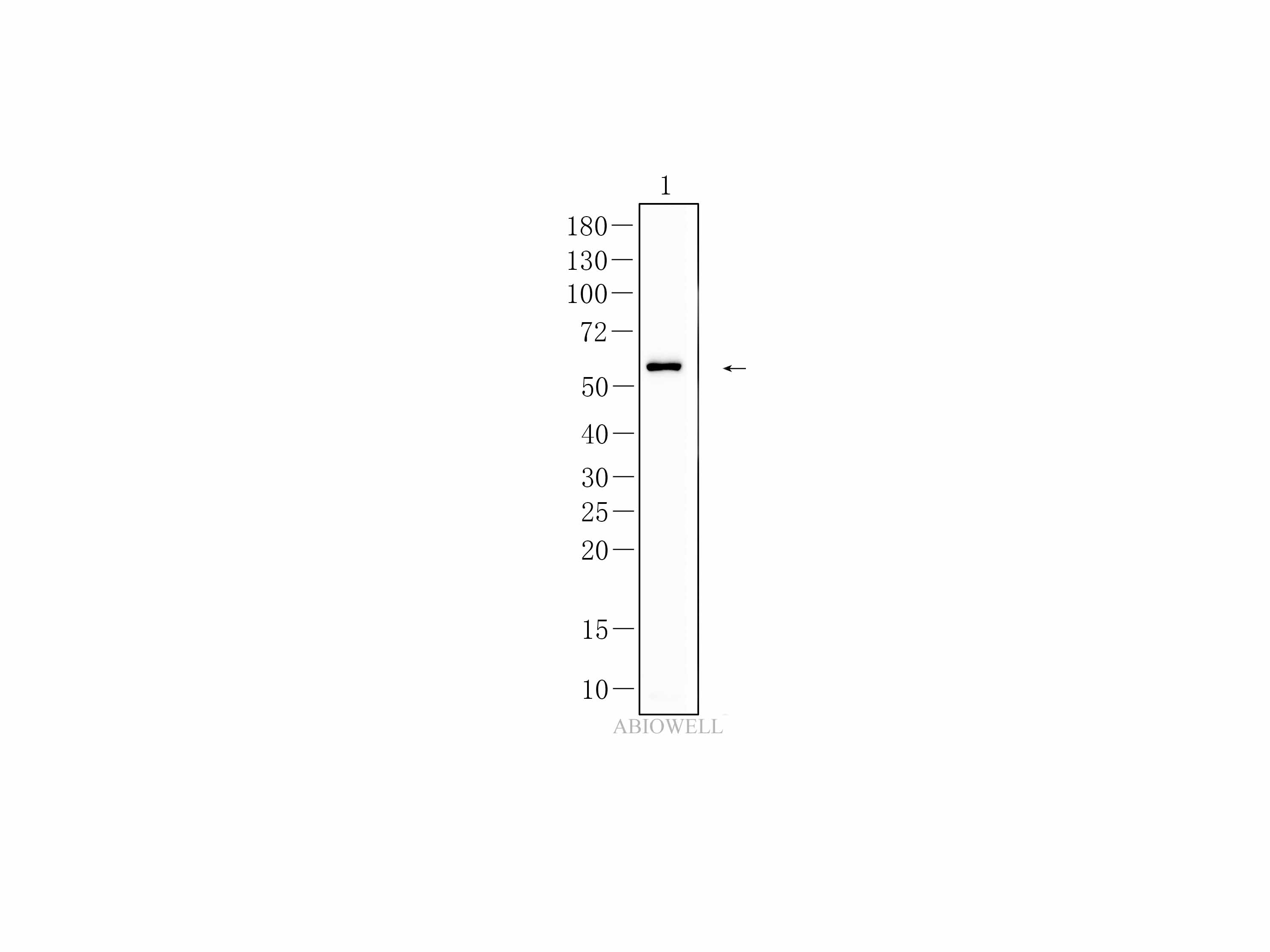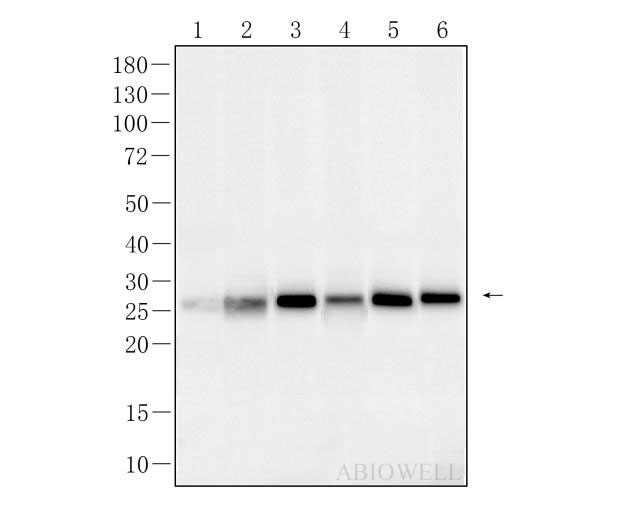HO-1 Recombinant Rabbit Monoclonal Antibody
-
-
- 20μL
- ¥620
- 1-3个工作日
-
- 50μL
- ¥1250
- 1-3个工作日
-
- 100μL
- ¥2200
- 1-3个工作日
Product Details | Host Species: Rabbit | Reactivity: Human,Mouse,Rat | Molecular Wt: 33 kDa | |
Clonality: Monoclonal | Isotype: IgG | Concentration: 1mg/ml | ||
Other Names: bK286B10; heme oxygenase (decycling) 1; Heme Oxygenase 1; Heme oxygenase 1; HMOX1; HO; HO 1, HO1; HO-1; HO-1/HMOX1; HSP32; HMOX1D | ||||
Formulation: Liquid in PBS containing 50% glycerol, 0.5% BSA and 0.02% sodium azide. | ||||
Purification: Affinity-chromatography | ||||
Storage: Store at -20°C. Stable for one year after shipment. Aliquoting is unnecessary for -20°C storage. | ||||
Applications | WB 1:500-1:2000 | |||
Immunogen Information | Gene Name: HMOX1 | Protein Name: Heme oxygenase 1 | ||
Gene ID: 3162 (Human) | SwissPro: P09601 (Human) | |||
Subcellular Location: Endoplasmic reticulum membrane. | ||||
Immunogen: Synthetic peptide within human HO-1. AA range: 1-50. | ||||
Specificity: HO-1 Monoclonal Antibody detects endogenous levels of HO-1 protein. | ||||
| Product images | |
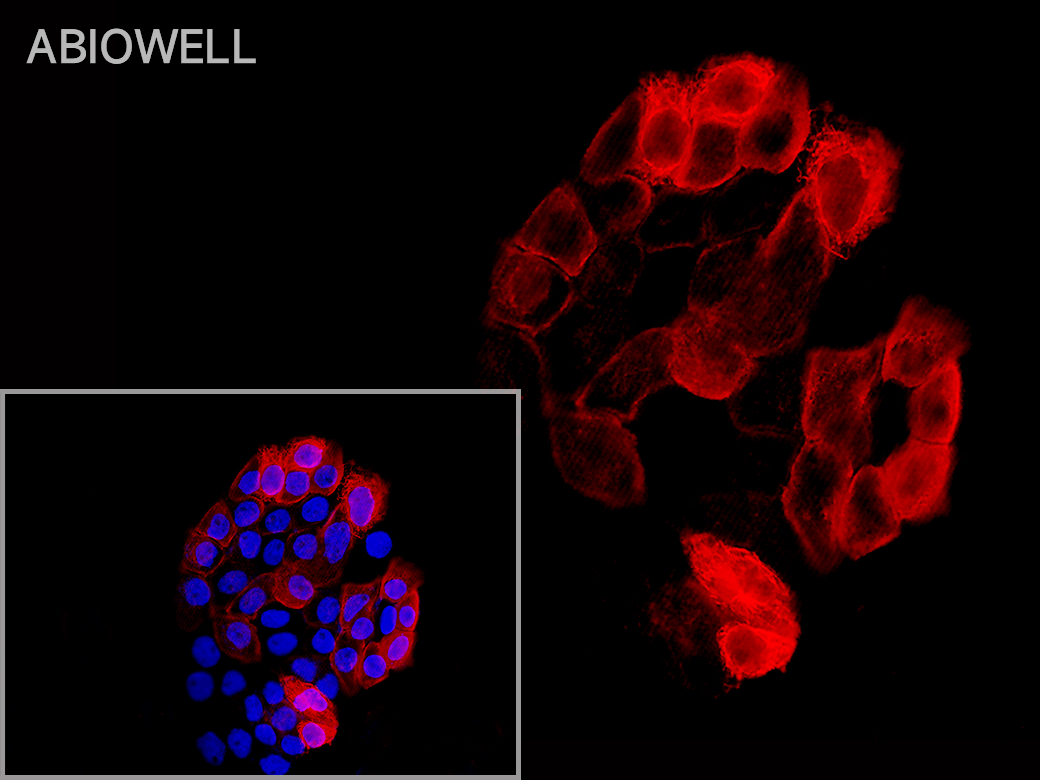
|
Fig: Immunocytochemistry analysis of A-431 cells labeling HO-1 with Rabbit anti-HO-1 antibody (AWA12614) at 1/50 dilution(Red ). Cells were fixed in 4% paraformaldehyde for 10 minutes at 37 ℃, permeabilized with 0.03% Triton X-100 in PBS for 30 minutes, and then blocked with 5% BSA for 60 minutes at 37 ℃. Cells were then incubated with Rabbit anti-HO-1 antibody (AWA12614) at 1/50 dilution in 2% negative goat serum overnight at 4 ℃. Goat Anti-Rabbit IgG H&L (iFluor™ 594, AWS0006) was used as the secondary antibody at 1/200 dilution for 60 minutes at 37 ℃. Nuclear DNA was labelled in blue with DAPI(AWC0291). |
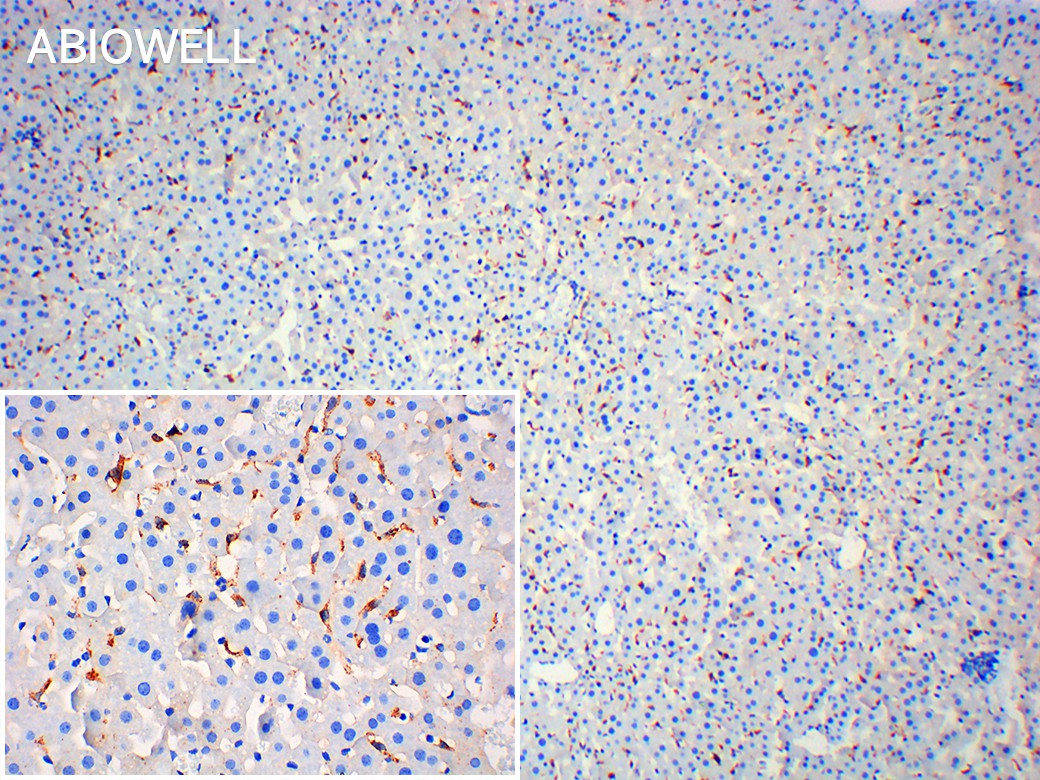
|
Fig : Immunohistochemical analysis of paraffin-embedded Mouse-liver tissue with Rabbit anti-HO-1 antibody (AWA12614) at 1/200 dilution. The section was pre-treated using heat mediated antigen retrieval with Sodium citrate buffer (pH 6.0) for 20 minutes. The tissues were blocked in 3% H2O2 for 15 minutes at room temperature, washed with ddH2O and PBS, and then probed with the primary antibody (AWA12614) at 1/200 dilution for 2 hour at 37℃or overnignt at 4℃. The detection was performed using an HRP conjugated compact polymer system(ABIOWELL, AWI0629). DAB was used as the chromogen. Tissues were counterstained with hematoxylin and mounted with DPX. |
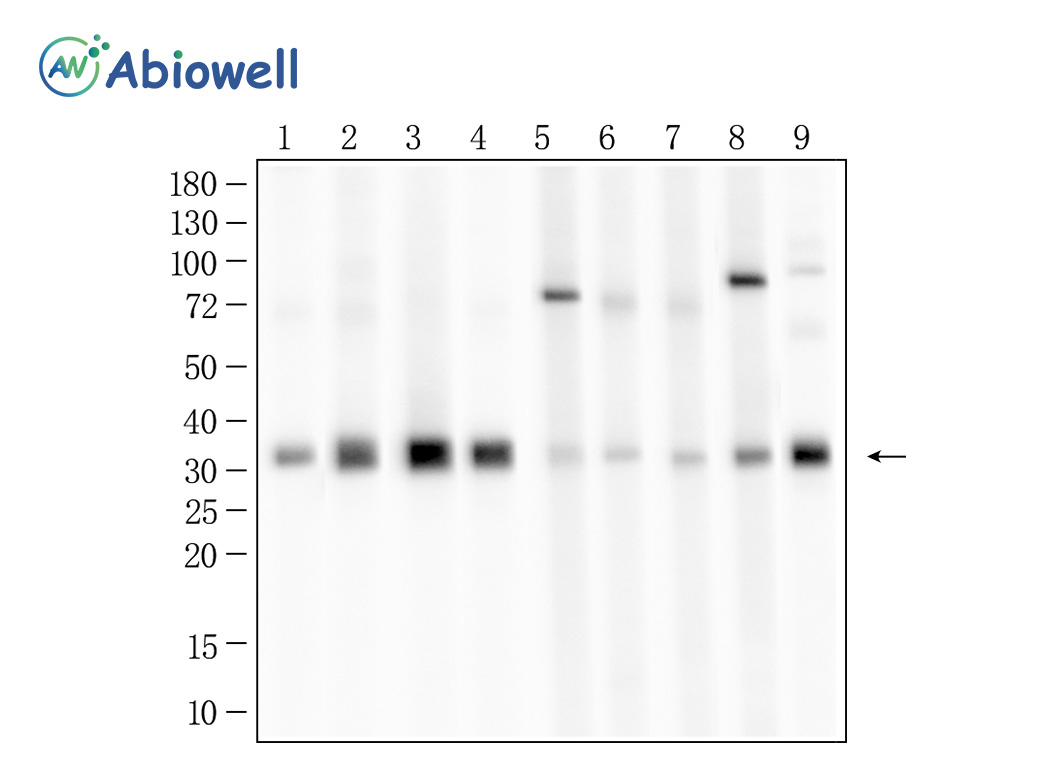
|
Fig : Western blot analysis of HO-1 on different lysates. Proteins were transferred to a NC membrane and blocked with 5% NF-Milk in TBST for 1 hour at room temperature. The primary antibody (AWA12614, 1/1000) was used in TBST at room temperature for 2 hours. Goat Anti-Rabbit IgG - HRP Secondary Antibody (AWS0002) at 1:5,000 dilution was used for 1 hour at room temperature. Positive control: Lane 1: Hela cell Lane 2: HepG2 cell Lane 3: HEK293 cell Lane 4: A549 cell Lane 5: A431 cell Lane 6: PC3 cell Lane 7: HEPA1-6 cell Lane 8: EL-4-B5 cell Lane 9: LLC cell Predicted molecular weight:33KD Observed molecular weight:33KD Exposure time:15 sec |
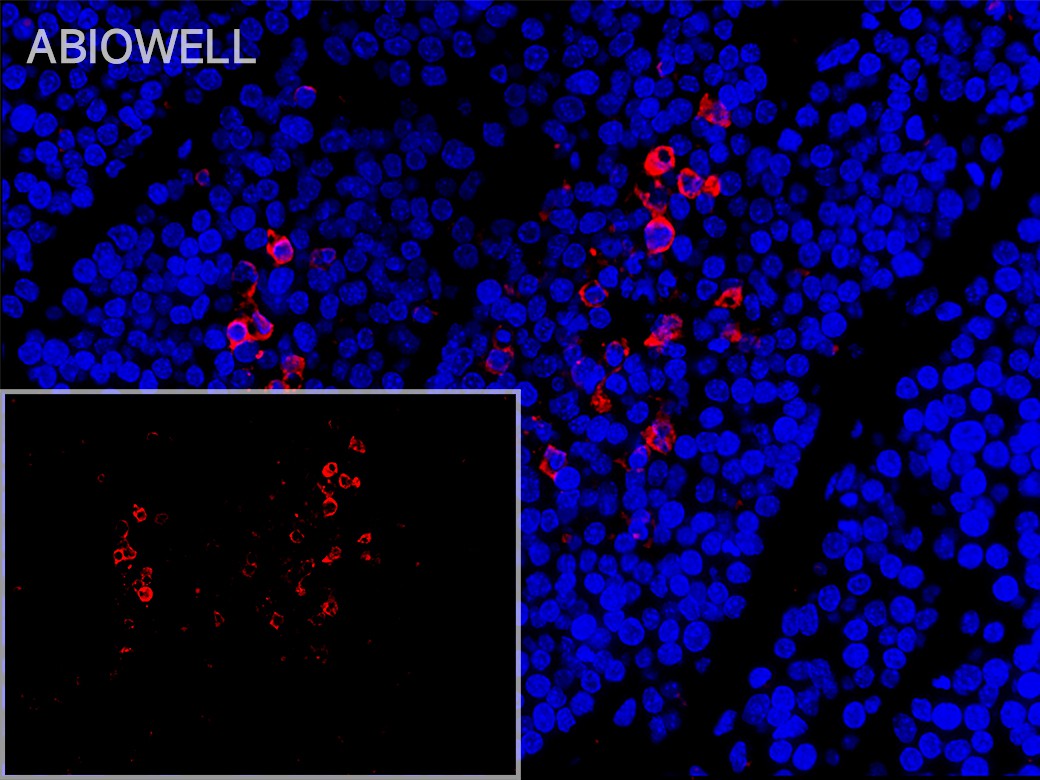
|
Fig: Fluorescence immunohistochemical analysis of RM-1 cell derived xenograft tissue (Formalin/PFA-fixed paraffin-embedded sections). with Rabbit anti-HO-1 antibody (AWA12614) at 1/200 dilution. The immunostaining was performed with the TSA Immuno-staining Kit (ABIOWELL, AWI0689). The section was pre-treated using heat mediated antigen retrieval with Sodium citrate buffer (pH 6.0) for 20 minutes. The tissues were blocked in 3% H2O2 for 15 minutes at room temperature, washed with ddH2O and PBS, and then probed with the primary antibody (AWA12614) at 1/200 dilution for 1 hour at room temperature. The detection was performed using an HRP conjugated compact polymer system followed by a separate fluorescent tyramide signal amplification system (red). DAPI (blue, AWC0291) was used as a nuclear counter stain. Image acquisition was performed with Slide Scanner. |
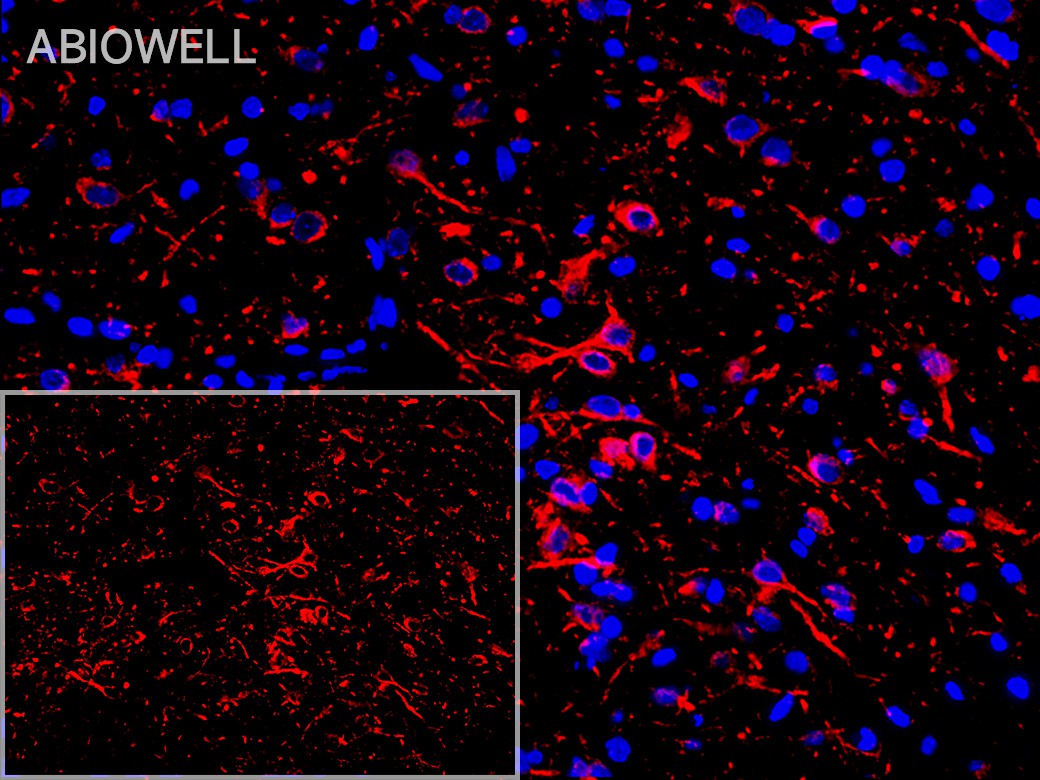
|
Fig: Fluorescence immunohistochemical analysis of Rat-cerebellum tissue (Formalin/PFA-fixed paraffin-embedded sections). with Rabbit anti-HO-1 antibody (AWA12614) at 1/200 dilution. The immunostaining was performed with the TSA Immuno-staining Kit (ABIOWELL, AWI0689). The section was pre-treated using heat mediated antigen retrieval with Sodium citrate buffer (pH 6.0) for 20 minutes. The tissues were blocked in 3% H2O2 for 15 minutes at room temperature, washed with ddH2O and PBS, and then probed with the primary antibody (AWA12614) at 1/200 dilution for 1 hour at room temperature. The detection was performed using an HRP conjugated compact polymer system followed by a separate fluorescent tyramide signal amplification system (red). DAPI (blue, AWC0291) was used as a nuclear counter stain. Image acquisition was performed with Slide Scanner. |
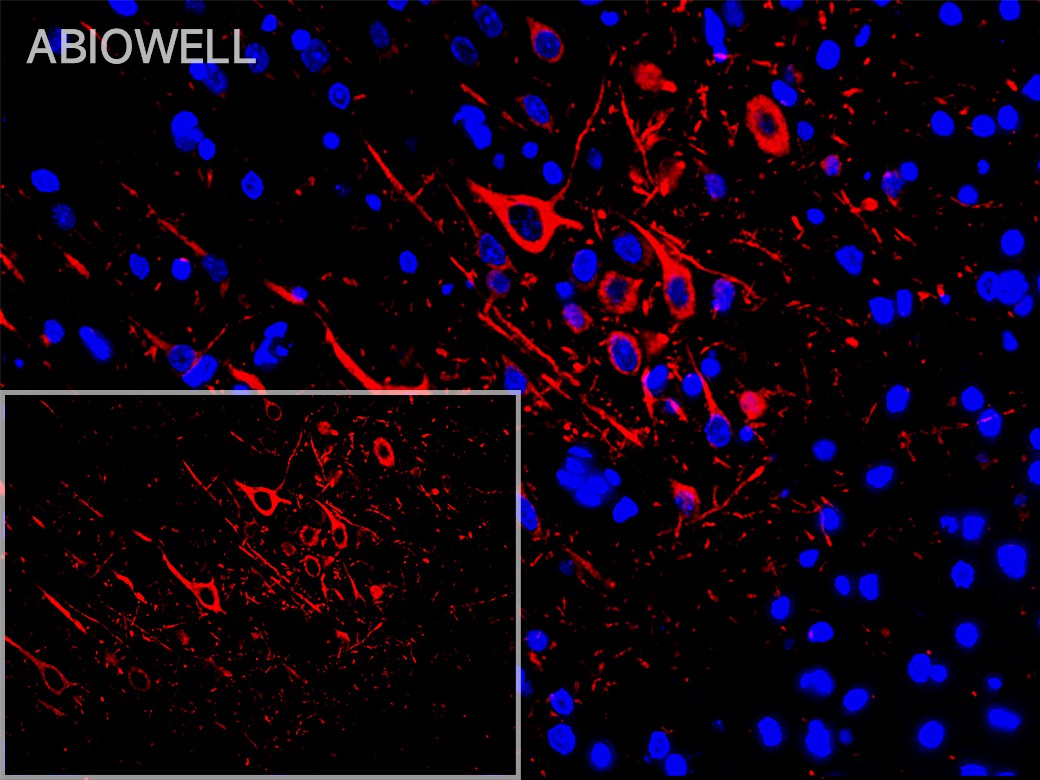
|
Fig: Fluorescence immunohistochemical analysis of Rat-brain tissue (Formalin/PFA-fixed paraffin-embedded sections). with Rabbit anti-HO-1 antibody (AWA12614) at 1/200 dilution. The immunostaining was performed with the TSA Immuno-staining Kit (ABIOWELL, AWI0689). The section was pre-treated using heat mediated antigen retrieval with Sodium citrate buffer (pH 6.0) for 20 minutes. The tissues were blocked in 3% H2O2 for 15 minutes at room temperature, washed with ddH2O and PBS, and then probed with the primary antibody (AWA12614) at 1/200 dilution for 1 hour at room temperature. The detection was performed using an HRP conjugated compact polymer system followed by a separate fluorescent tyramide signal amplification system (red). DAPI (blue, AWC0291) was used as a nuclear counter stain. Image acquisition was performed with Slide Scanner. |
-
-
- 20μL
- ¥620
- 1-3个工作日
-
- 50μL
- ¥1250
- 1-3个工作日
-
- 100μL
- ¥2200
- 1-3个工作日
-
相关产品
-
Cdk6 Recombinant Rabbit Monoclonal Antibody
GAPDH Rabbit Polyclonal Antibody
GFAP Recombinant Mouse Monoclonal Antibody
Ki67 Rabbit Monoclonal Antibody
HMGB1 Recombinant Rabbit Monoclonal Antibody
SQSTM1/p62 Mouse Monoclonal Antibody
Bcl-2 Recombinant Rabbit Monoclonal Antibody
SOD2 Rabbit Polyclonal Antibody

